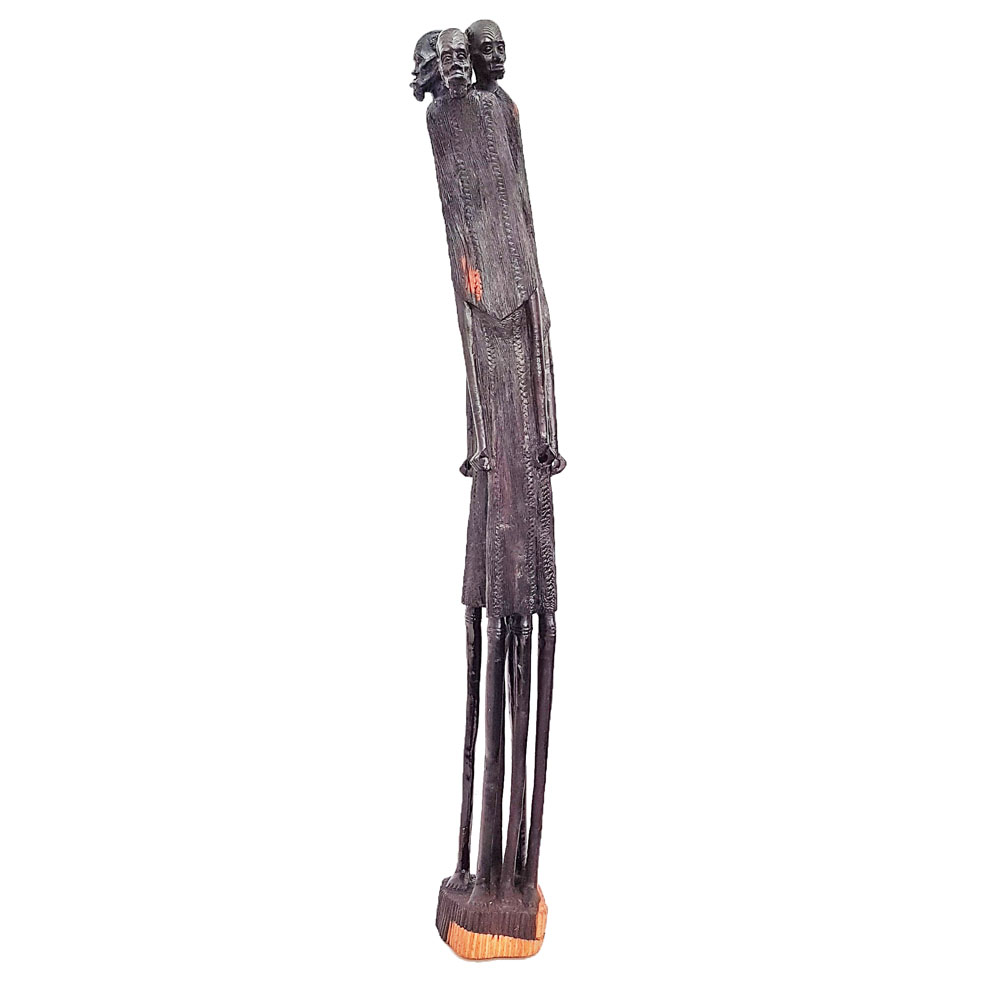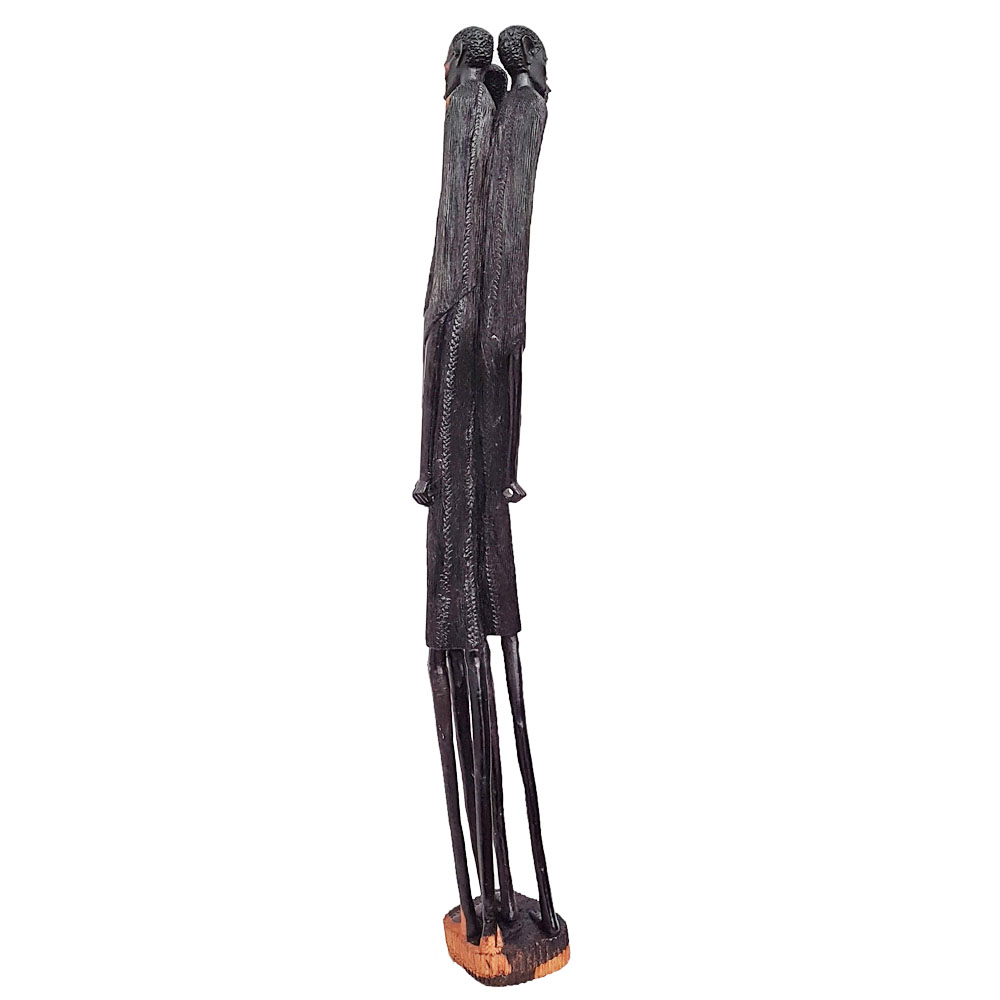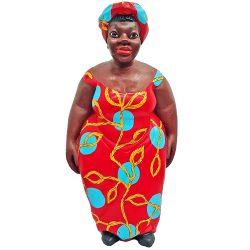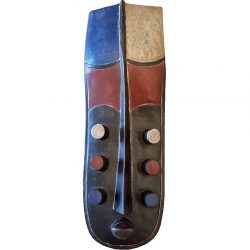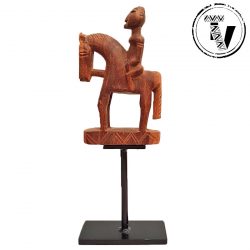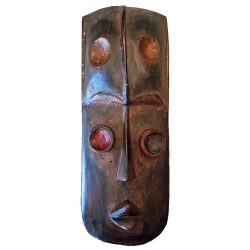Description
Ujamaa Ebony Wood Sculpture
Ujamaa or Tree of life
Roberto Yakobo Sangwani left his home in Mozambique and headed for Tanzania in the latter years of the 1950s. With him he brought a style of Makonde art formally known as Dimoongo, meaning ‘power of strength’ or ‘tree of life”. Traditionally these sculptures portrayed clusters of connected wrestlers holding up a winning victor. Gradually, the main figure shifted to represent tribal heads or other people in unity with community members or family. Regardless, of who the central figure of a sculpture is, the organization of this style represents one central figure, surrounded by and supported by other figures. These figures exemplify ujamaa (family ties) or relationships in a community and bring forth the underlying reverence the Makonde have for their ancestors or society.
The Makonde are an ethnic group in southeast Tanzania, northern Mozambique, and Kenya. The Makonde successfully resisted predation by African, Arab, and European slavers. They speak Makonde, also known as ChiMakonde, a Bantu language closely related to Yao.
Makonde art can be subdivided into different styles. Traditionally, the Makonde have carved secular household objects, ritual figures, and masks. After the 1930s, Portuguese colonizers and other missionaries arrived at the Mueda plateau in Northern Mozambique. They showed great interest and fascination for the Makonde wood carvings and began to order different pieces, from religious to political “eminences.” The Makonde sculptors, after noticing such interest, decided to carve the new pieces, using pau-preto (ebony wood, Diospyros ebenum) and pau-rosa (Swartzia spp.) instead of the soft and not long-lasting wood they had used before. This first contact with the Western culture can be considered to be the first introduction of the classical European style into the traditional Makonde style.
Makonde art is an integration of dated practices of woodwork met with a demand for woodcarving of the modernized world. After the introduction of road systems in the plateaus between Tanzania and Mozambique by Portuguese troops during World War I, the traditional sense of the practice began to shift to meet social and economical demands. Once a signifier of ritualistic expression made solely by men, kept hidden from women, Western influences on Makonde art changed who created the art and for what reasons. Portuguese forced labor and taxes encouraged many Makonde people to expand the practices of traditional woodcarving. One way of this evolution was expressed through these figures. Traditionally, practical things like tools and ritualistic helmet masks were the center of creation. However, after the insertion of road systems, Europeans and missionaries began to commission Makonde people to create religious symbolic sculptures. This contributed to the distinction of Ujamaa, Shetani, and Binadamu styles of Makonde art.
